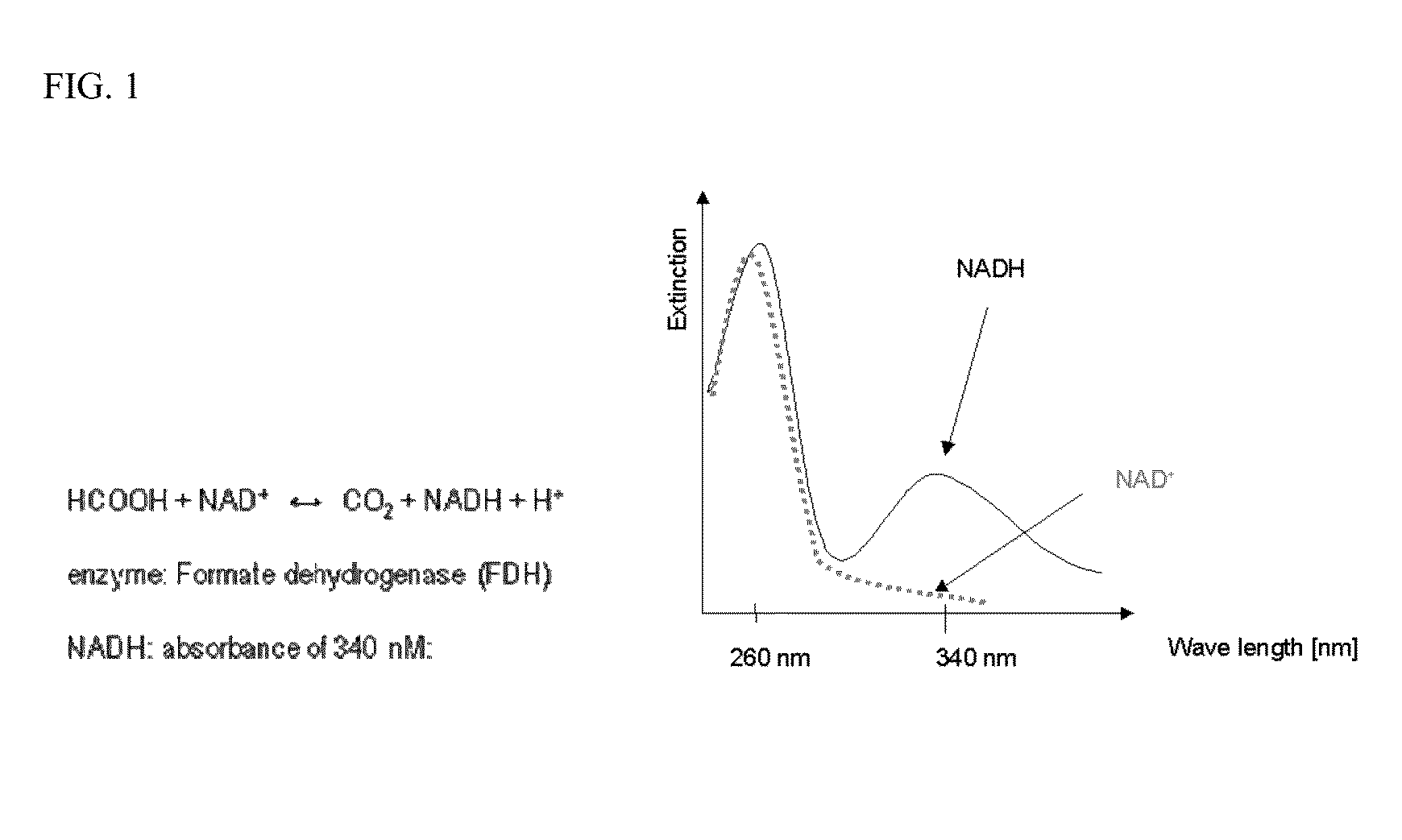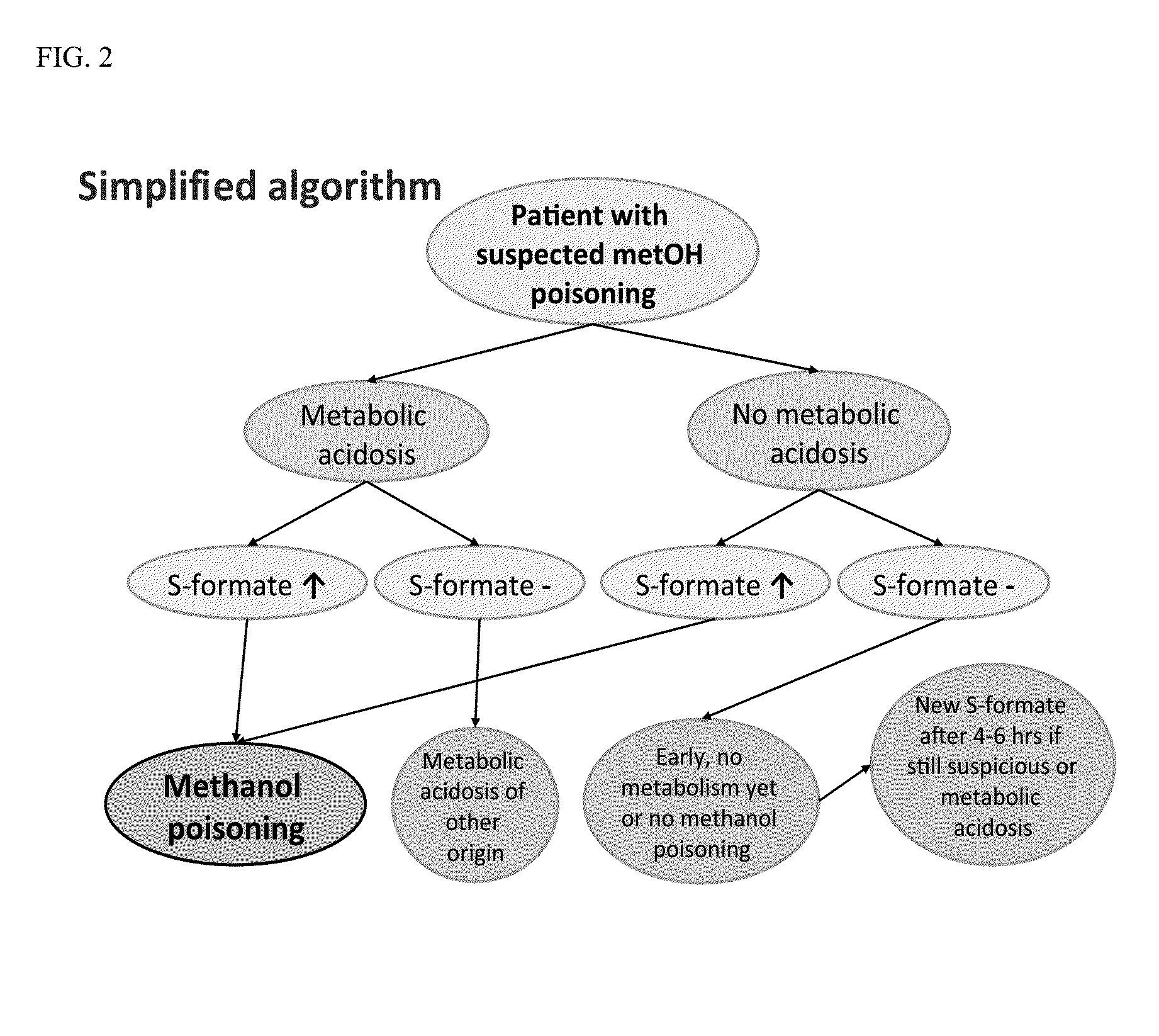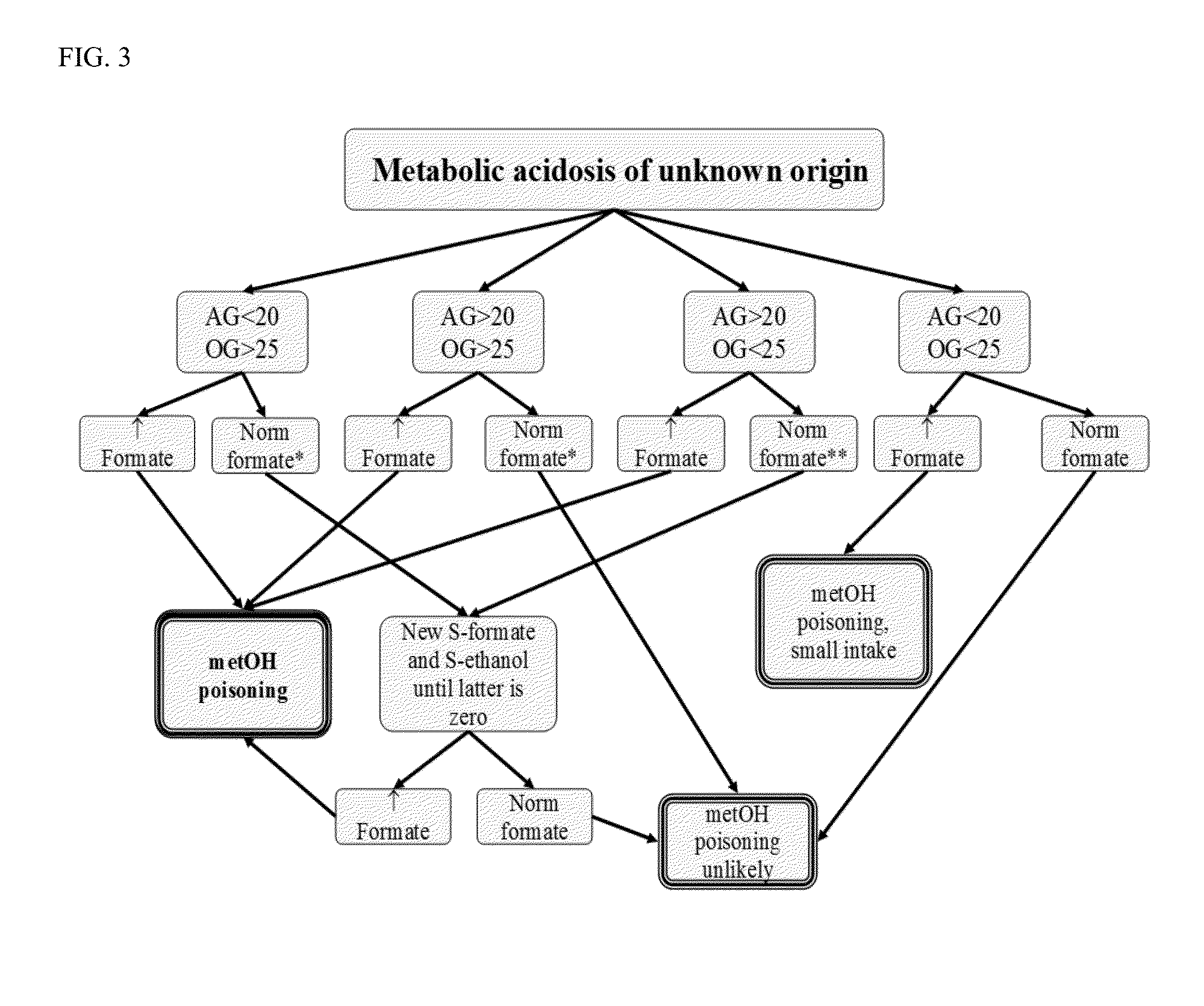Systems and methods for monitoring biological fluids
- Summary
- Abstract
- Description
- Claims
- Application Information
AI Technical Summary
Benefits of technology
Problems solved by technology
Method used
Image
Examples
example 1
Reagents
[0079]1. NAD (nicotinamide dinucleotide) commercially available from, for example, Sigma and many other companies).
2. Formate dehydrogenase from Roche (catalog no 244 678, contains 80 U or other concentration)
3. A phosphate buffer pH=7.5 such as 0.1M phosphate buffered saline (PBS) pH=7.5
Preparation of Reagents for Use:
[0080]Both NAD and formate dehydrogenase are sold in dry state and are stable for extended periods.
1. Dissolve approx 0.2 g of NAD in 30 ml buffer. (Reagent 1)
2. Dissolve the content of one bottle formate dehydrogenase (80 U) in 5 ml buffer (Reagent 2)
Both reagents are stable at 4-8° C. for approx 4-5 days and frozen reagents (preferentially at −40° C. or below) are stable for many months.
Analysis
[0081]1. Mix 1 part sample (serum or blood), 10 parts reagent 1 and 5 parts reagent 2.
2. Incubate for 5-10 minutes at 37° C. or at 20° C. for 7-10 min.
3. Measure absorbance in a photometer at 340 nm.
Evaluation of Result
[0082]1. The reagent itself (in the absence of sa...
example 2
[0084]This example describes the development of a colorimetric dry-reagent test strip for measuring formate in the range of 0-20 mM in buffer solutions with detection limit ≦2 mM by simple dip and read procedure. The strip also finds use in measuring formate in for example, whole blood and serum.
[0085]The developed formate test strip is a dry-reagent, self-dosing, “dip-and-read”, colorimetric test device, which contains in dry state all reagents needed for measuring formate. The following reagents were used: Formate Dehydrogenase (Roche Applied Sciences), Diaphorase (Sigma D2197), MTT (Sigma M2128), NAD (Sigma N1636). Other components were also included in the formate formula for better enzymes stability and strip performance.
[0086]The strip was made as follows:
[0087]a. Single reagent mixture was prepared by making HEPES buffer pH 7.9 first.
[0088]b. Enzymes were added from 100 U / mL stock solutions (in the same buffer).
[0089]c. All other ingredients were added to the mixture as dry p...
example 3
[0110]This example describes the detection of formate in serum and whole blood.
Formate in Serum
Materials Used:
[0111]For this study the early developed Formate test strip formula and pooled human serum from Cedarlane laboratories were used.
Preparation of Serum Samples:
[0112]Serum samples having 0, 1, 3, 5, 10 and 20 mM formate were prepared by addition of formate stock solutions (0.1 M and 0.5 M, pH 7.5) to the human serum.
Strip Activation:
[0113]20 μL of serum sample were put on the top surface of the formate reagent pad. After 5 seconds excess of liquid was removed from the strip surface. Color of the strip was measured in 2 minutes after strip activation.
Visual Evaluation:
[0114]Visual readings revealed clear color distinction between all the formate levels in serum −0, 1, 3, 5, 10 and 20 mM. Color of the strip changed from light yellow-greenish to green to blue in the 0-20 ppm formate range. The greenish color hue was due to the yellow serum color.
Instrumental Strip Readings:
[0115]...
PUM
| Property | Measurement | Unit |
|---|---|---|
| Time | aaaaa | aaaaa |
| Concentration | aaaaa | aaaaa |
| Level | aaaaa | aaaaa |
Abstract
Description
Claims
Application Information
 Login to View More
Login to View More - R&D
- Intellectual Property
- Life Sciences
- Materials
- Tech Scout
- Unparalleled Data Quality
- Higher Quality Content
- 60% Fewer Hallucinations
Browse by: Latest US Patents, China's latest patents, Technical Efficacy Thesaurus, Application Domain, Technology Topic, Popular Technical Reports.
© 2025 PatSnap. All rights reserved.Legal|Privacy policy|Modern Slavery Act Transparency Statement|Sitemap|About US| Contact US: help@patsnap.com



